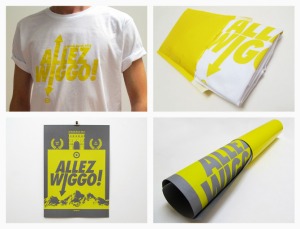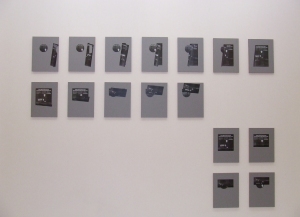This was a free event which I attended at the Cornerhouse which was a lecture where five creators spoke about personal projects. I found it interesting to find out what made creators passionate about art from their personal experiences and how work and leisure can overlap. The first speaker was Lucy Schofield curator of ‘The Bibliotherapy Artist’s Book Library’ where she decided to explore her belief that reading books and engaging with art have huge mental health benefits. Her project started from her love of artistic books and as her collection grew she wanted to inspire other people to write, illustrate and make there own books. She travelled across the UK with around 150 books and swapped and borrowed them to different people interested in reading them. She felt that certain books could make you feel a certain way so therefore made a diary of the titles and a description of how they would work as a remedy for certain people, when they felt a particular negative emotion. In some ways giving them an emotional classification. The main issues which people face and hope to be relieved from when reading one of these books is time, anxiety, their love life and the issues of balancing their work life with their personal life. The project has been on-going for several years and recently Lucy Schofield has yearned to expand the project into other cities and countries. She has began to make strides in achieving this goal by touring with her artist’s book library in a Citroen H Van a distinct vehicle with a heritage of supplying bread and clothes to rural French communities since the 1950’s as mobile shops. The vehicle is really suitable for the campaign as Lucy’s idea consists of people actually sitting in the vehicle and being able to read their ‘prescription’ in a comfy setting, engaging people significantly. I thought this was a really interesting project and one which I felt reflected Lucy’s passion for reading books, libraries and connecting with different people.
The second speaker was Garlon Cheung from the digital agency ‘Reading Room’. He spoke about his passion for motorbike racing and how he incorporated play into his life to inspire his work. He took part in the Anglesey ‘Tracmon’ race which is an 8 hour day of racing, however Cheung explained within five laps of the race he broke down. The team at Reading Room had gone to support the Chief Engineer in the race and even made themselves a pit stop team. When the bike came off the track they worked collaboratively to try and get the vehicle up and running again. Cheung explained that through ‘playing’ it helped the team learn, create and achieve things they wouldn’t have done otherwise, demonstrating that its good to enjoy different experiences. The team at the ‘Reading Room’ came across as fun and exciting and gave a down to earth presentation of their personal project which they enjoy outside of work.
Hannah Leighton-Boyce was a recent MA graduate from The Manchester School of Arts after studying a textile degree. Her work resembles experiences of time and the creation of space. Her work focuses on moments of encounters which represent the unseen thoughts, through the suspension of pauses. She explores the multi sensory responses to a site or space, exploring how to make visible those moments.
Matt Kendall, the owner of the agency ‘Retrofuzz’ spoke about his passion for cycling and how he produced some artwork following ‘Bradley Wiggins’ victory in 2012 Dauphine Libere as well as the excitement he’s created for his chances of winning the ‘Tour de France’. The project was something Matt Kendall produced one evening whilst messing around on his computer. He uploaded the image onto Twitter and got a fantastic response so decided to create t-shirts with the design printed on them. The project grew and grew with people requesting other merchandise a car sticker was even made which was seen on the aerial view shots from the helicopter capturing the race. As it was a personal project all the money Matt Kendall raised went to the Christies Young Oncology Unit. I thought this was a fantastic project and brilliant that all the money raised went to a good cause. It shows the power of social networking and word of mouth.
A photographer named Seba Kurtis produced images which were relevant to his own personal experience of an illegal immigrant. He lived for five years illegally until he married a young girl and was able to stay in the country. He documents people crossing the different boarders of countries, hiding and vehicles and finding other ways in.
Kurtis was recently commissioned by Fotografia Europea Italia, Vita Comune to produce a series of pictures called ‘Thicker Than Water’. The art is inspired by the detention systems that the UK Border Police offices use such as the heartbeat human detector to capture people illegally trying to enter the UK. The focus is on lorries’ chassis, which enter ports in the UK. The lorries contain very sensitive software that detect a human heart rate within 30 seconds of somebody entering the lorry. Kurtis used very long exposures and then scanned the film into a computer. He then pushed the levels up to reveal an image of an immigrant. The metaphor was to detect the non-visible information of the film sheets. In contrast are also some sharper images, which were positioned along side the more abstract ones to show the illegal immigrants that are known to the UK police and are undertaking steps to gain the right documentation to work in the UK.
Seba Kurtis’ presentation was one of my favorites of the day. I studied photography at A-level and felt as though I couldn’t be as creative as I’d like and the reason I didn’t pursue it further, however photographer like Seba Kurtis completely proved that notion wrong and he creates meaning through different exposures and techniques in Photoshop. A really interesting story depicted in an imaginative and truthful way.
Overall I felt ‘Show and Tell’ was an excellent way to get into some of the creative minds currently working in the UK and to understand what helps to inspire them. I thought it was very engaging and it shows how something that can start off as quite small can become a big idea.


















You must be logged in to post a comment.